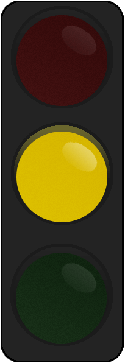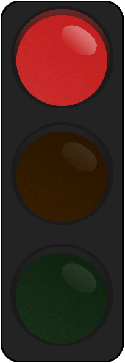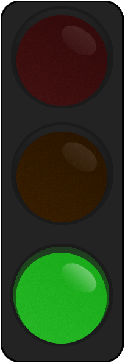INUBAKA: CRAZY FOR DOGS (Dog Idiot), by Yukiya Sakuragi. First published in 2004, and first published in North America in 2007.
PLOT:
Suguri is a simple, cheerful girl who loves nothing more than dogs. In fact, she's so simple that her parents want to keep her under their control by arranging a job for her near home. Being an 18 year old girl, though, Suguri wants to be on her own and thus runs away with only her dog Lupin as company. She eventually meets up with Teppei, a grumpy Tokyo pet shop owner. Their dogs meet up as well, and end up getting VERY friendly. This is bad for Teppei, who was planning on breeding his purebred lab for profit. To make up for his lost profit, Suguri offers to work for him at his pet shop. Soon it's revealed that she had an innate understanding of dogs. So, even as she creates chaos in and around the shop, she leaves her charges happier and healthier than before.
STORY:
You know, there are characters that are simple and innocent and are perfect little Pollyannas, and then there are those that are so simple and naïve that you begin to wonder if they're mentally challenged. That's how I feel about Suguri.
She may be of legal age, but mentally I don't feel that Suguri is quite there yet. This fact makes it kind of awkward that Suguri is usually the butt of the story's jokes, as she's nearly kidnapped once and a coworker constantly scams money from her for gambling. She's also ridiculously happy about dogs having bowel movements, and her presence makes dogs so happy that they can involuntarily pee themselves. Oh, by the way, get used to a lot of jokes centering around doggy pee and poop.
At its core, Inubaka is just a dog-themed screwball comedy. It's about a Manic Pixie Dream Girl who enters a straightlaced guy's life and improves it as she turns it upside-down, with each chapter consisting of one-shot stories about the dogs inside and outside of the shop. Ultimately, it's an unsophisticated little comedy about dogs and the people that love them, even if the lead is a little too naïve to be believed.
ART:
The artwork is fairly polished for such a middle-of-the-road work. Sure, the faces sometimes seem a bit too small for their heads, but the character designs are otherwise well proportioned and detailed. Of course, the mangaka's real interest is in the dogs. They're by and large the best drawn thing within its pages, and each breed is easily recognized and drawn as to be almost photorealistic. They even behave like real dogs, save for one overly clever Corgi puppy. Backgrounds are frequent if mundane, and the page composition is equally mundane.
Now, remember all that stuff I said about Suguri earlier? Well, the awkwardness around her is only intensified by the fact that she's the main source of fanservice. Someone who can barely live by herself should not be the source of panty shots, if you ask me. There also may be some fetish fuel in the fact that Suguri wears a dog collar, although it has a purpose in the story (it's a reminder of the dog that rescued Suguri from a childhood kidnapping).
Overall, the art is more focused on the dogs than the people, but is solidly rendered.
PRESENTATION:
Nothing to see here.
RATING:
 I could see dog lovers enjoyed this series a bit, but otherwise Inubaka just feels like a trifle, albeit a trifle with some weird undertones.
I could see dog lovers enjoyed this series a bit, but otherwise Inubaka just feels like a trifle, albeit a trifle with some weird undertones.This series was licensed by Viz. This series is complete at 22 volumes. 17 volumes were released, and the series is currently out of print.
You can purchase this volume and many more like it through RightStuf.com!





